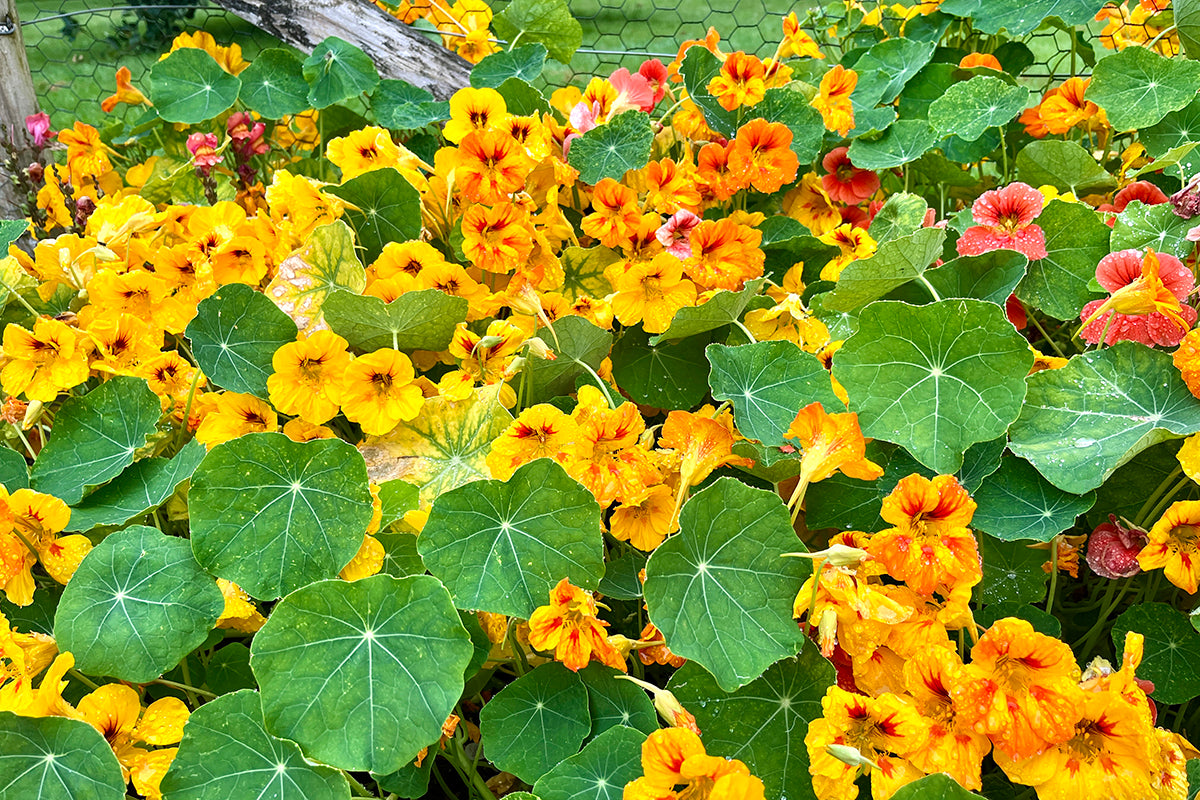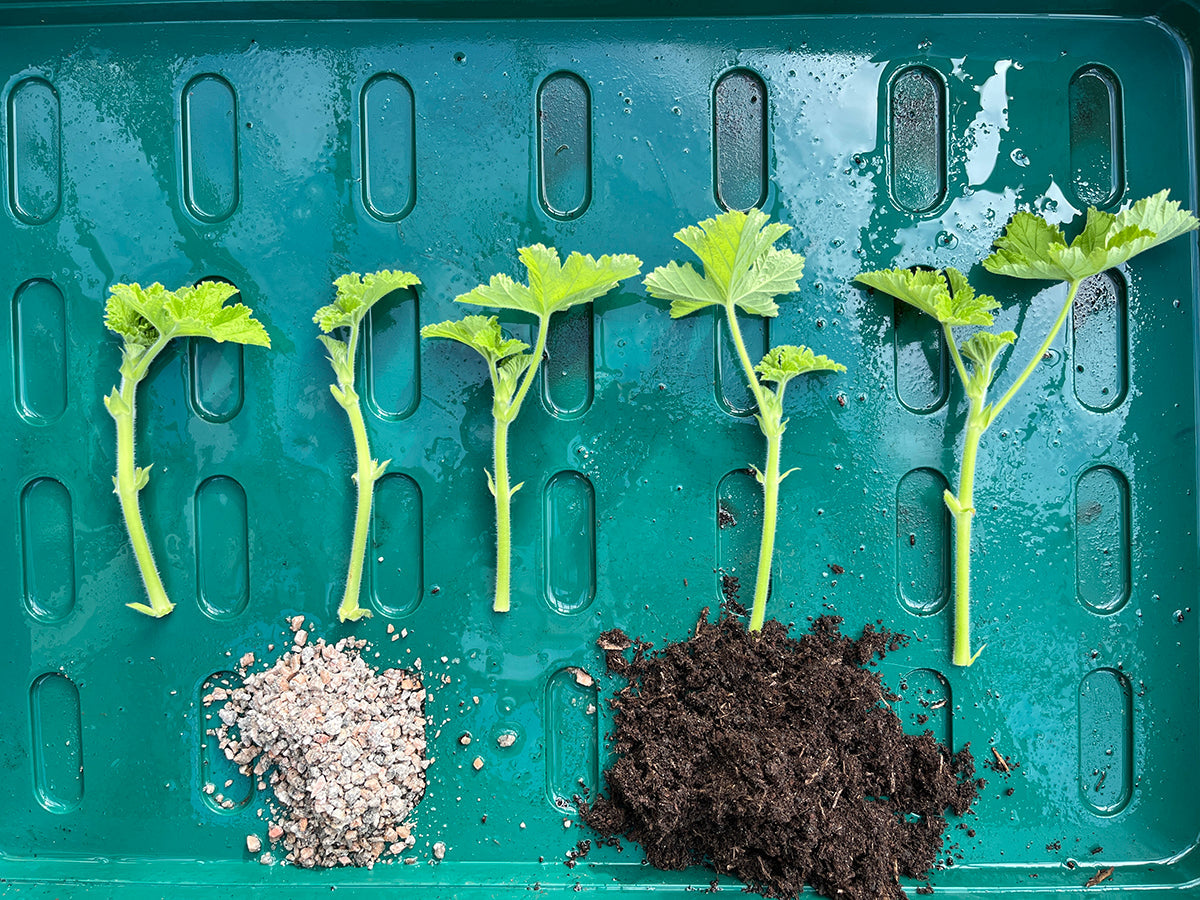A twisted nose

This year we dedicated one of the vegetable beds to a selection of flowering annuals. About 5 metres long by less than 1 metre wide, we wanted to inject some colour into the area, as well as attracting pollinators, beneficial insects, and having a few stems to cut for the cottage table.
Along with sunflowers, Cosmos, old fashioned Clarkia, sweet peas, and snapdragons we sowed a few seeds of nasturtium. Without a doubt, the nasturtiums are currently the star of the show. They’re putting on a magnificent display with almost more flowers than leaves. We’ve always liked them in the garden, their inquisitive stems twining through neighbouring plants, making a dash for it across the lawns and paths.
Nasturtiums, known by botanists as Tropaeolum comprise a family of around 80 species. The most common garden annual species is T. majus. Within that group are dozens of seed options. Colours range from pillar-box red to pinks, yellows, oranges, creams, and peach. Several have bicoloured flowers too. Many are trailing, semi-trailing, or clump forming and the leaves, usually green, can also be variegated, appearing spattered with white paint - ‘Alaska’ is a good example of this.
Several such as ‘Darjeeling Double’ and ‘Hermine Grashoff’ even hold an RHS Award of Garden Merit. Both are sterile and can only be propagated by cuttings. Another annual nasturtium not often seen is T. peregrinum. Known as The Canary Creeper with bright yellow ‘feathered’ flowers it’s a rapid grower that will scramble and climb up any nearby structure.
Two perennial species are likely to be encountered in gardens. Tropaeolum tricolour is a stunning climber, so attractive that we’ve added it to our autumn shopping list. With its well deserved Award of Garden Merit, it boasts clusters of red, black, and gold flowers with trailing spurs, and comes early into growth with flowers in April and May. Tropaeolum speciosum is the other species likely to be encountered. Known as The Scottish Flame Flower it’s often planted at the base of yew hedges where its bright red flowers contrast nicely with the dark green of the yew’s foliage.
If you’ve heard that the leaves and flowers of nasturtium are edible you’d be right. The name comes from latin for ‘twisted nose’. The leaves and flowers are edible and one taste will tell you why it gets the name. Hot peppery watercress is known scientifically as Nasturtium aquaticum and we all know what effect that can have on an unsuspecting nasal passage.











